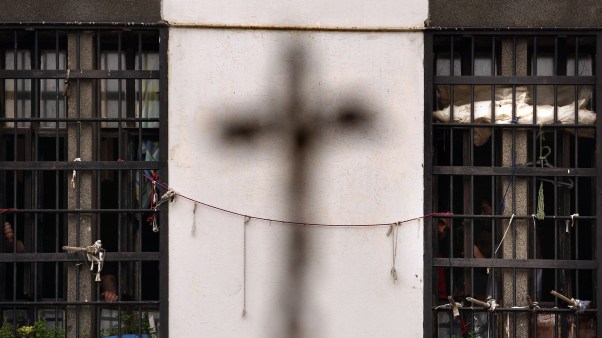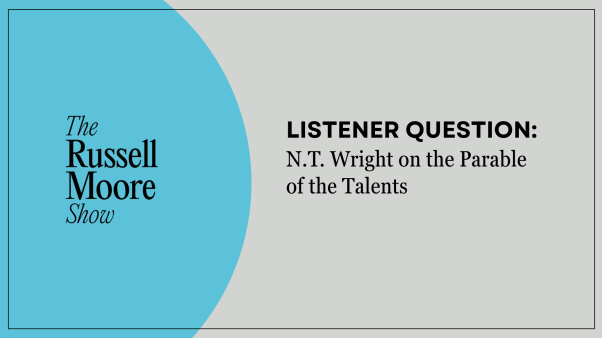In this series

Belief in Christ’s personal return to set up his earthly kingdom—premillennialism—has always claimed adherents, but few people in the mid-1800s imagined it would attract more than a handful.
Yet by 1875 a new kind of premillennialism called dispensationalism began to spread. Given the embarrassing recent history of premillennialism in the United States (see the story of the Millerites, page 31), its revival was nothing less than amazing.
The new premillennialism came to the United States following the Civil War, after flourishing in Britain among the Plymouth Brethren. One of the Brethren’s most gifted teachers was John Nelson Darby (1800-1882), a former priest in the Anglican Church of Ireland, who developed a new variety of futurist premillennialism. He called it dispensationalism, after the division of history into dispensations or eras.
“These periods are marked off in Scripture by some change in God’s method of dealing with mankind, in respect to two questions: of sin, and of man’s responsibility,” explained C. I. Scofield, who popularized Darby’s system in America. “Each of the dispensations may be regarded as a new test of the natural man, and each ends in judgment—marking his utter failure in every dispensation.”
Dispensationalists quibbled over the number and names of the dispensations, but most American dispensationalists followed Scofield’s seven-fold scheme: Innocency (before the Fall), Conscience (Fall to the Flood), Human Government, Promise (Abraham to Moses), Law (Moses to Christ), Grace (the church age), and Kingdom (the millennium).
A.D. 1878
Fundamentalists sign the “Niagra Creed,” which includes premillennial teachings.
There was nothing especially radical about dividing history into periods. What separated dispensationalists from everybody else was their novel method of biblical interpretation. Everything in the dispensationalist system seemed to rest on the conviction that God had two completely different plans operating in history: one for an earthly people, Israel, and the other for a heavenly people, the church.
To Darby, the plan for God’s earthly people had been revealed through a series of covenants with Israel: the unconditional Abrahamic Covenant, the law-oriented Mosaic Covenant, the royal Davidic Covenant, and a new Messianic Covenant.
Until Messiah’s coming, however, God’s earthly people must suffer Gentile domination, prophesied by Daniel. This Gentile hegemony would end at the coming of Messiah, 70 weeks after one of the Gentile rulers issues a decree allowing the Jews to return to Jerusalem to repair its broken walls. But when the Jews rejected Jesus as their Messiah, God suspended the prophetic timetable at the end of Daniel’s sixty-ninth week and began building a new and heavenly people—the church.
Enrapturing doctrine
Dispensationalists were convinced that God would not deal with the two peoples concurrently. Consequently, it seemed necessary that God remove the church before proceeding with the final plans for Israel.
This led to dispensationalism’s most controversial and distinctive doctrine—the secret, any-moment, pre-tribulational Rapture (“catching away”) of the church. Earlier premillennialists believed the Rapture would occur at the end of the tribulation, at Christ’s second advent. But dispensationalists separated the Rapture (when Christ will come for his saints) from the Second Coming (when he will come with his saints).
Once the heavenly people of God have been raptured, Darby believed, the divine script can be played out to the end. The Antichrist will rise, Christ and his saints will break through the clouds and destroy him and his followers in battle (the Second Coming), the nations of the world will be judged, and Satan will be thrown into a bottomless pit. Then, with the conclusion of Daniel’s seventieth week, the victorious Messiah will restore the throne of David, and the millennial kingdom will begin, followed by the Last Judgment and a new heaven and earth. The seven dispensations then over, time shall be no more.
United front
Dispensationalism’s first adherents had to overcome some serious public relations problems, especially in establishing their evangelical credentials. For decades most evangelicals did not consider dispensationalism orthodox. Eventually, however, the rise of theological liberalism forced many conservative evangelicals into a close, defensive alliance.
A key example is the Bible conference movement. While Darby was planting his seeds in American soil, a group of conservatives (including premillennialists) founded the Believers’ Meeting for Bible Study. Eventually headquartered at Niagara-on-the-Lake, Ontario, and renamed the Niagara Bible Conference, it met for two weeks each summer, aware that it was standing firm for beliefs others were starting to deny.
Premillennialists quickly assumed leadership of the Niagara Conferences. James Brookes presided for more than 20 years and was primarily responsible for drawing up the 1878 “Niagara Creed.” In addition to its plank on premillennialism (which gave many Niagara supporters pause), the “creed” affirmed traditional evangelical distinctives such as the authority of the Bible and the absolute necessity of personal conversion to Christ.
Meanwhile, some dispensationalists wanted to focus attention on prophetic themes. Thus the First American Bible and Prophetic Conference was held in New York City in 1878, and was so successful that six more followed. Those convening the conferences noted that “when from any cause some vital doctrine of God’s Word has fallen into neglect or suffered contradiction and reproach, it becomes the serious duty of those who hold it … to bring back the Lord’s people to its apprehension and acceptance.”
Liberalism’s “solitary antidote”
Growing more daring because of their increasing visibility and respectability in evangelical circles, dispensationalists frequently made rather extraordinary claims for their distinctive doctrines. Reuben A. Torrey, successor to D. L. Moody on the revival circuit, claimed that premillennial belief in the Second Coming was the ultimate cure for theological infidelity and an impregnable bulwark against liberalism and false cults:
“In the truth concerning our Lord’s return is the safeguard against all current heresies, errors, and falsehoods. … It is remarkable how all forms of error touch the doctrine of Christ’s second coming, and are shattered by the truth revealed about it in the Scriptures.”
William Bell Riley, who eventually led the fundamentalist movement in Minnesota, called pre- millennialism “the sufficient if not solitary antidote to the present apostasy.” To arrive at a premillennial position, one had to interpret the Bible literally, thus ensuring that one grasped the other essential doctrines of the faith as well.
Naturally, when premillennialists said such things, they annoyed many of their conservative evangelical allies who thought they could get along just fine without dispensationalism. A. A. Hodge, the Princeton Seminary professor whose doctrine of biblical inerrancy most premillennialists espoused, called the pretribulational rapture of the church “an unscriptural and unprofitable theory.”
J. Gresham Machen, the leader of conservative Presbyterians during the 1920s, demonstrated the ambivalent attitude of many evangelicals: He wrote that the rebirth of “premillennialism in the modern church causes us serious concern; it is coupled, we think, with a false method in interpreting Scripture which in the long run will be productive of harm. Yet how great is our agreement with those who hold the premillennial view.”
Such criticism always stung premillennialists, who prided themselves on a straightforward, common-sense reading of the Bible. Though they participated in the conservative evangelical alliance, at times premillennialists felt lonely, isolated, and unappreciated. Like it or not, in an age when the truth of a doctrine was often judged by the company it kept, dispensationalists had to defend their doctrine by showing who believed in it.
Leaders found and created
Premillennialists could point to a number of respected and prominent evangelical leaders within their movement. Revivalist D. L. Moody, “Mr. Evangelical” to nearly everyone at the end of the century, was an early convert to premillennialism (though not a very doctrinaire dispensationalist). Nearly every major revivalist from his time to World War I adopted his eschatology.
Premillennialists could also point to a few leaders in the evangelical world missions movement. But by far the most important symbols of dispensationalist respectability were the prominent pastors who gave their congregations steady doses of the new premillennialism.
Early on, dispensationalists devised a way to produce a steady stream of new leadership through the Bible institute movement, which they helped to establish at the end of the nineteenth century as a hedge against liberal theology.
Almost without exception, the scores of Bible institutes founded between 1880 and 1940 taught the new premillennialism. Through the ministries of these schools’ graduates—pastors, evangelists, Bible teachers, missionaries, youth workers—dispensationalism spread.
Traditionalists, with a twist
Dispensationalism spread also because its advocates were able to demonstrate some clear continuities with traditional evangelical beliefs and practices.
First was their commitment to biblicism. At a time when conservatives were increasingly concerned about higher criticism of the Bible, premillennialists stood firmly for inerrancy and biblical authority.
Furthermore, premillennialists maintained that anyone could read the Bible and understand it. Dispensationalist teachers agreed that the biblical text was best studied inductively, eliminating the personal bias and pitfalls of subjective interpretations of which the liberals were guilty.
Still, premillennialist Bible teachers insisted one could not do justice to either the Bible’s big picture or its smaller parts without a firm grasp of dispensational truth. Ironically, over their inductive method they placed an enormously complex dispensational system and forced the Bible’s content to pass through its interpretive grids.
Second, premillennialism was loyal to apostolic doctrine. For the evangelical rank and file, the faith was “once for all delivered to the saints” during the times of the Apostles. Thus the church’s task in every age is simply to restate what the Apostles taught, and their words were found in the Bible alone.
Since the Bible clearly contained passages on the apocalyptic return of Jesus, it should be good enough for Christians in modern times.
Third, premillennialism also followed the overt supernaturalism of the evangelical tradition. While liberals were uneasy about such a supernatural worldview, dispensationalism’s affirmation of the supernatural was just the thing many Protestants were looking for. Instead of placing God within the historical or evolutionary process, premillennialists still believed in a God who stood outside history and intended to intervene in it—soon.
For better or worse?
By the end of the nineteenth century, premillennialism looked much more believable than postmillennialism. In the eyes of most people, recent events signaled worse times—not better.
Howard Pope, the superintendent of men at Moody Bible Institute, was trained as a postmillennialist at Yale. But his study of missions and world population growth convinced him that the world was not being converted to Christ, as he had been taught to expect. So he “converted to the premillennial view as quickly as Saul was converted to Christ,” he said.
Other former postmillennialists said the same thing. It was becoming harder and harder to read the morning newspaper and believe that the Millennium was right around the corner. What looked inevitable in the 1830s—the Christianization of the nation and the world through the success of revivals and reform—no longer seemed possible, short of some miraculous intervention of Jesus himself.
Premillennialists made much of the current problems of society and interpreted them as "signs of the times." Political corruption, pornography, alcohol abuse, the rise of monopolies, labor unrest, the desecration of the Lord’s Day by immigrants, worldliness in the church, liberal theology, international conflicts, forest fires, earthquakes, revivals, the rise of cults like Christian Science and Millennial Dawnism (Jehovah’s Witnesses), polio and influenza epidemics, changing weather patterns, the rise of Zionism, the sinking of the Titanic, the partitioning of Europe after World War I, radio—these and countless other events and trends were seen as proof that premillennialism was correct and the end of the age was rapidly approaching. Eventually, even its detractors realized that premillennialism seemed plausible.
Still, premillennialism’s rise cannot be explained on merely “environmental” grounds. There can be no adequate explanation that does not take into account how the movement sought to maintain important elements from the earlier evangelical tradition.
Timothy Weber is dean of Northern Baptist Seminary in Lombard, Illinois. He is author of Living in the Shadow of the Second Coming: American Premillennialism, 1875-1982 (University of Chicago, 1999).
Copyright © 1999 by the author or Christianity Today/Christian History magazine.Click here for reprint information on Christian History.










